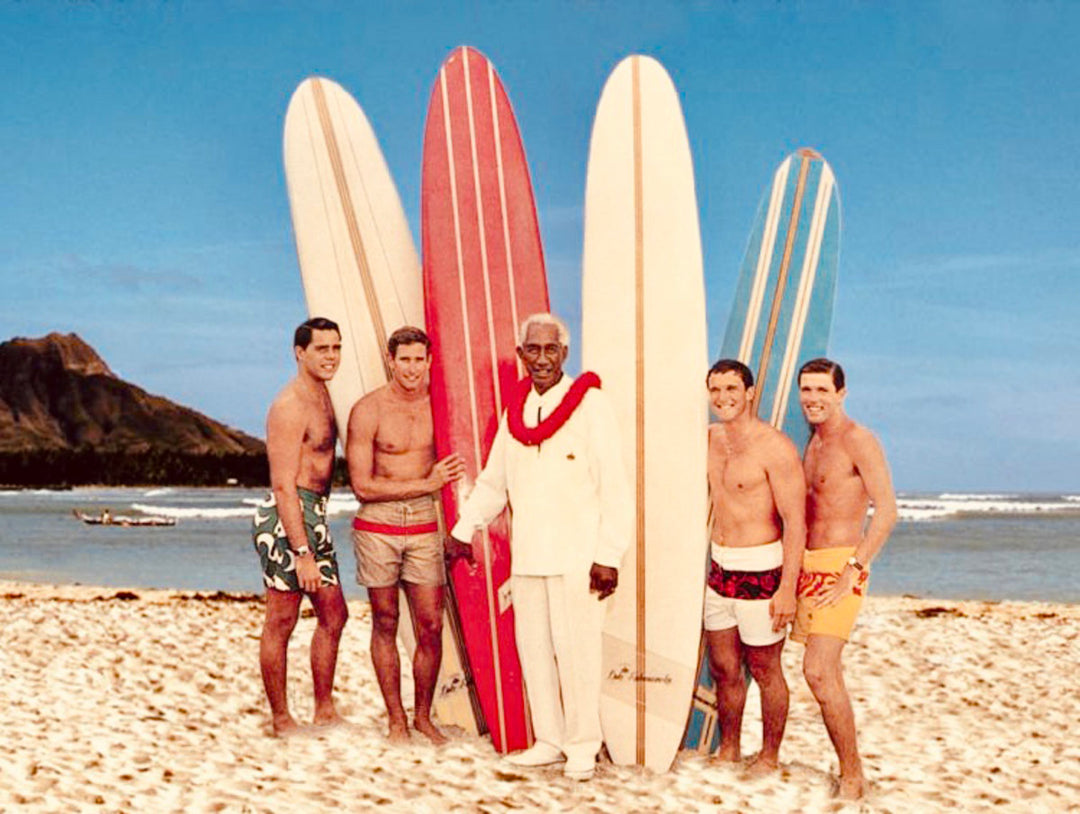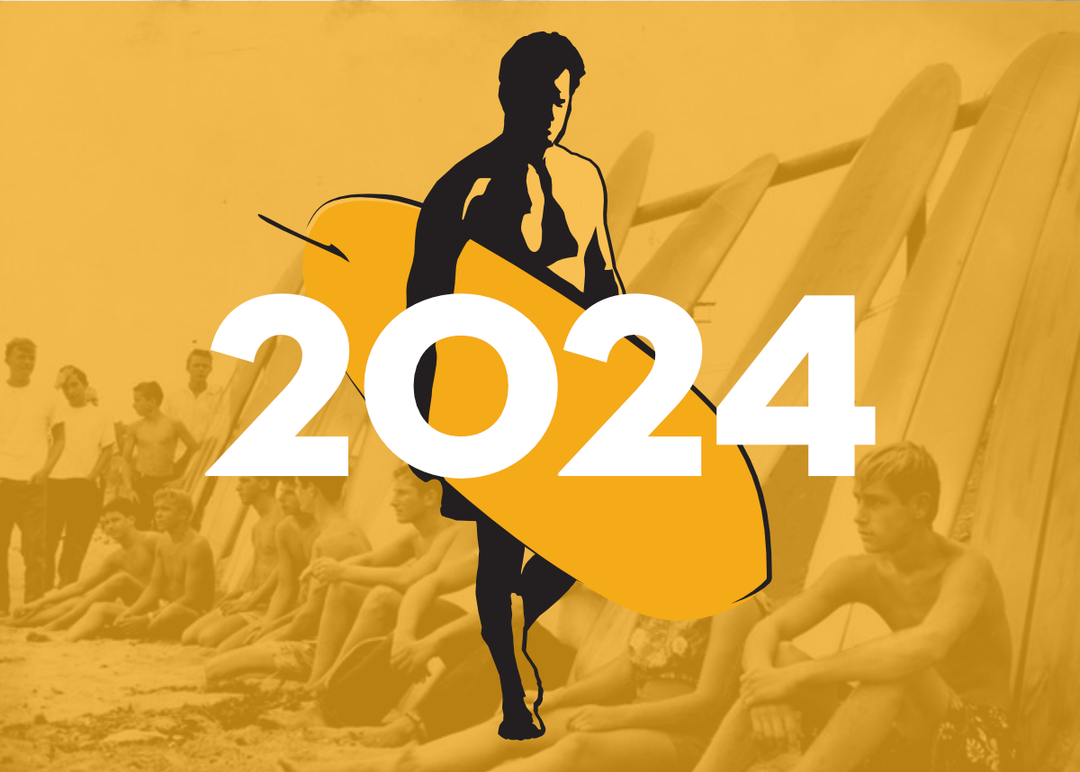THE SURF T-SHIRT
A Fashion Statement Since 1961
The origin of the surf t-shirt can be traced back to Europe in the early 20th century. At about the time surfing was enjoying its first renaissance in Hawaii, the U.S. was fighting in World War I. Surfing was popular with Hawaiian natives until missionaries showed up in the mid-19th century. They disapproved of surfing and consequently, most natives had given it up by around 1890. But thanks to guys like Duke Kahanamoku and other early surfers like George Freeth, the sport was re-born. We all know Duke as the father of modern surfing, and Freeth is credited with introducing the sport to Southern California in 1907.
During World War I, U.S. soldiers noticed that European troops were wearing comfortable, lightweight cotton undershirts in the hot summer months. It didn’t take long for the Americans – who were wearing heavy wool uniforms – to catch on. Because of the simple design that resembles the letter ‘T”, these undershirts soon became known to Americans as “t-shirts”.
But the t-shirt was still considered underwear, and it took such Hollywood notables as James Dean, John Wayne and Marlon Brando to help change that. In 1951, Brando shocked conservative U.S. moviegoers when his t-shirt was ripped off his chest in A Streetcar Named Desire. A few years later, the t-shirt became not only accepted as a stand alone outer garment, but actually very cool when James Dean starred in A Rebel Without A Cause.
To promote his new brand of surfboards in 1961, Floyd Smith of Surfboards by Gordon and Smith invited local surfers to bring white t-shirts into his San Diego surf shop. There, he had the now-familiar Gordon and Smith logo screened on the t-shirt backs at no charge. With this simple start, the surf t-shirt has probably become the sport’s most long-lasting contribution to the world of fashion. The surf t-shirt is so popular that in 2002, an estimated 300 million surf-related t-shirts were produced worldwide.
Surf t-shirts have found their way onto the silver screen as well. Remember Mackenzie Phillips in the 1973 movie American Graffiti, wearing a Dewey Weber Surfboards t-shirt that was way too big for her? And how about the1979 classic Apocalypse Now, in which Robert Duval sported an army green Yater Surfboards t-shirt as Colonel Kilgore?
Paul Holmes, an editor for Surfer magazine during the ‘80s and who still writes an occasional free lance article for Longboard Magazine, once wrote that surf t-shirts were “symbols of the casual and free-spirited surfing lifestyle.” In the ‘60s, competition team surf t-shirts with names like Weber, Hobie, Jacobs, Greg Noll and Velzy were especially popular. T-shirts from high profile surf contests such as the Duke Invitational and the World Surfing Championships were also the rage at the time.
The classic surf t-shirt has always featured a large logo on the back and a smaller graphic on the front – usually over the left chest. Most of the shirts in our Last Wave collection are still screened that way. It's a collection for those who remember the names and enjoy the casual, free spirited surfing lifestyle.
Mahalo,
Ted Rich









